This post is part of a series revisiting Marvel’s 1980s GI Joe comic books. Here’s an introduction to this series.
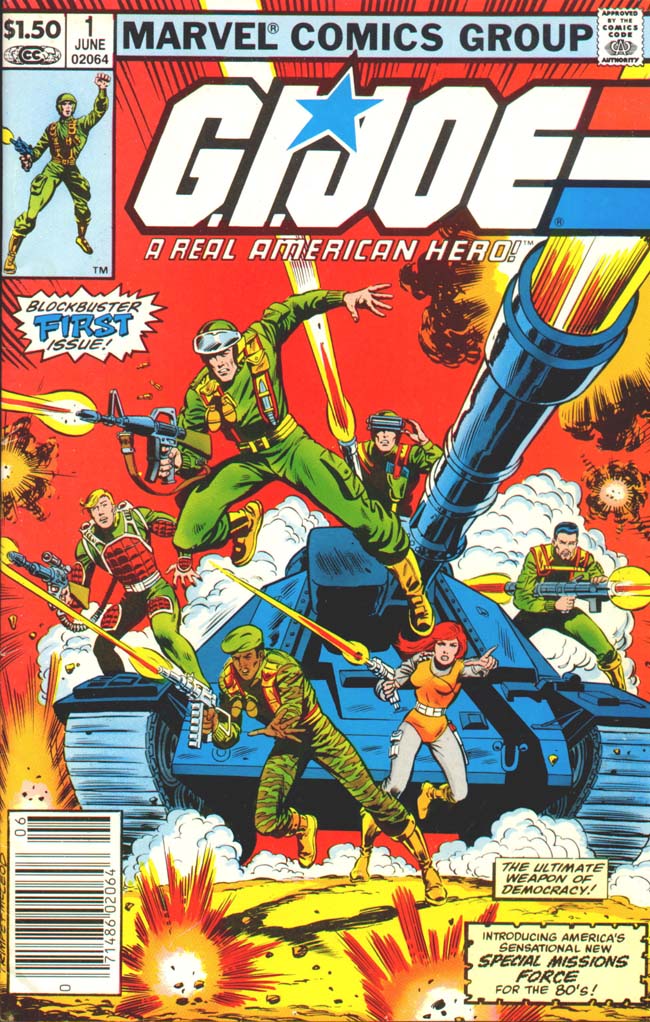
This is issue #1 of GI Joe, released in June 1982. It’s a big issue, with lots to talk about. Let’s get started!
What’s the story?
A prominent scientist—and controversial whistleblower who is publicly condemning a sketchy U.S. government weapons program—is kidnapped by Cobra, a stateless terrorist military force. GI Joe, the “sensational new special missions force for the ’80s,” is dispatched to raid the island fortress where Cobra is holding their prisoner. This setup turns out to be a Cobra trap (the first of many to come over the decades) intended to bait GI Joe into the open where they can be destroyed. Working in several small teams, a team of about a dozen Joes infiltrates the island, evades the trap, and rescues the scientist—although they fail to capture (not for the last time) a fleeing Cobra Commander and his sidekick, the Baroness.
What’s noteworthy about this issue?
The “real military” feel. Whereas some later incarnations of the GI Joe franchise veered into superspy or even near-superhero territory, with colorfully-costumed characters and sci-fi vehicles and weaponry, the GI Joe of 1982 is a fairly grounded affair. GI Joe is presented as a sort of elite extension of the regular military; they wear (mostly) regular-looking army fatigues; they have ranks, roles, tactics, and weapons that evoke the real military. Larry Hama, the revered Marvel talent who wrote and developed the GI Joe line for many years, was a Vietnam vet, and he brings a very noticeable “grunt’s eye view” to the franchise that will persist even as the stories, characters, and technology get more outlandish in later years.
That is not to say that this is a realistic story. The plots, villains, and action sequences are fanciful comic-book affairs with a light coating of real-world military terms and concepts sprinkled on top. Everyone here is a one-man army with access to sci-fi gadgets, but they act like grunts—grumbling about food in the mess hall, commiserating about boneheaded orders, etc.—and it gives this story and series a vibe that sets it apart from superhero stories.
Cobra is a nasty piece of work. In the later television cartoon, Cobra and its leadership are depicted as buffoonish clowns. Here, they’re a ruthless terrorist group with apparently a standing army (I recall that questions like “How is Cobra funding all these troops and gadgets?” are addressed to some extent in the series’ future). Their motives are left vague, but one gets the impression they’re mostly in this for the money, and that they plan to financially profit off of the info they can extract from their scientist prisoner.
Two named Cobra enemies appear in this issue—Baroness (who carries out the kidnapping with the help of her disguise/infiltration skills) and Cobra Commander, wearing a blue hood that evokes the KKK. Both are portrayed as ruthless jerks and murderers. Cobra Commander actually comes across as reasonably smart—he’s anticipated the government response to the kidnapping and accurately guesses how the Joes will go about their attack.
Cobra soldiers are masked, making them look like faceless hordes in contrast to GI Joe, whose members don’t (in most cases) hide their faces. I’m sure there’s plenty of psychological messaging to be unpacked there. Cobra’s vehicles and equipment resemble Soviet designs from the 70s and 80s. If the rows of goose-stepping, nameless soldiers didn’t do it, the MiG-like aircraft would definitely have evoked “enemy of freedom” vibes in the imaginations of 1980s readers. Soon, Cobra will get their own quirky and weird vehicles to match those in the GI Joe arsenal; I’ll be interested to see how long this Soviet aesthetic lingers. Certainly it’s an easy visual shortcut to let American readers in 1982 instantly recognize the bad guys:
The bullets are real! People can get killed in this comic! The guns are shooting real bullets! This is not a grim and gritty story of violence and its consequences, but it does feel important that already in issue #1, the Joes and Cobras alike are shooting to kill. Cobra appears to kill several bystanders during their kidnapping, and later executes the entire population of a village to prevent them from lending aid to the Joes (we see bodies strewn about in one mildly chilling panel).
That said, battle scenes are pretty tame—there’s no gore or realistic depictions of violence on display. And in one amusing scene, it’s suggested that the Joes, at least, are pulling their punches just a tad.
But this isn’t a cartoon world of blue and red lasers that never hit anything, where aircraft crew always manage to bail out when their plane is shot down.
In later years, keeping up with trends in the comic world, GI Joe will move in a grittier and more violent direction. For now, everything is overall quite tame, but the presence of real bullets establishes some stakes.
The politics are muddled and weird. The setup here is that a scientist has been tricked by the US government into working on technology for a project she finds morally abhorrent—a “doomsday machine”:
That seems pretty morally straightforward, right? A device that would incinerate the world’s population in response to a nuclear first strike is a bad thing, I think most people would agree. (The Soviets reportedly implemented just such a system in 1985, a few years after this comic hit the stands.) So the kidnapped whistleblower scientist is the hero of the story, right?
Well, not according to this comic. Upon hearing the news of her kidnapping, here are the responses suggested by the heroic members of America’s elite freedom force:
First, General Flagg suggests intentionally bungling a rescue operation to goad Cobra into executing their prisoner.
Other Joes chime in:
- Stalker sneers at the idea of rescuing “a woman who’s practically a traitor.”
- Snake-Eyes suggests carpet-bombing the entire island where she’s being held with B-52s to kill everyone there (including the civilian population). Scarlett later has to remind Snake-Eyes that killing the kidnapped scientist “with one well-placed shot” isn’t the plan.
- Short-Fuse describes the scientist as a “traitor.”
Yo, Joe!!!
To be fair, I think this issue is trying to find a middle ground here. In 1982, when this issue was published, the reputation of the US military and its government leaders was likely pretty low after the Vietnam War and the Watergate scandals. (And at the time of this issue’s publication, the US president was engaged in a startingly illegal and immoral arms sales scheme to circumvent Congressional disapproval, although Hama wouldn’t have known about that yet.) It’s impossible not to wonder if Larry Hama, drawing on his experiences as a veteran, is trying to remind us that the real-world US military is comprised of good and moral people—people who would risk their lives to save the life even of somebody who criticized the military.
In the end, the kidnapped scientist expresses remorse that she assumed she had a “monopoly on scruples.” I appreciate that she doesn’t back down from her views:
But there’s no reciprocation from the other side; no Joes acknowledge that the scientist is just as much a patriot as they are. I think that “We’ll come to your aid, even if you’ve criticized an ethically dubious military project!” is not the most inspiring slogan for America’s elite freedom force.
Ultimately, I think Hama is trying to deliver a nuanced message here, about the presence of fundamentally good people on different sides of a societal debate about America’s military operations and the people carrying them out. And in future issues, I think we’ll see him tease out this nuance more effectively. Here, it’s clunky and somewhat off-putting.
Favorite panel: I like this image of Cobra Commander parading around on a horse like a tin-pot dictator. It tells us that Cobra is a weird organization. Is it a would-be nation-state? A terrorist force motivated by ideology? A cult of personality? We’ll find out in future issues!
Next up: The Joes travel to the Middle East in “Hot Potato.”
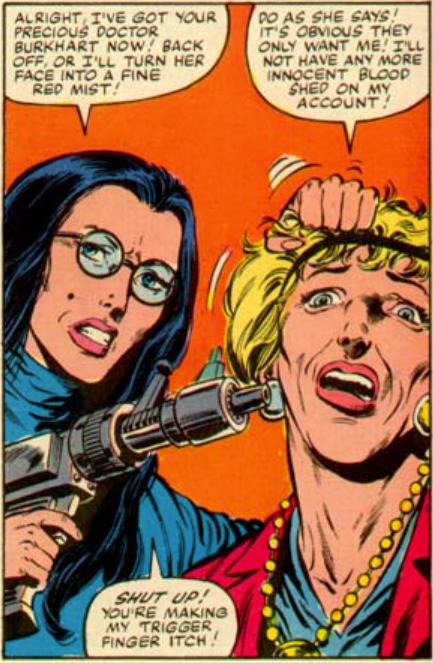


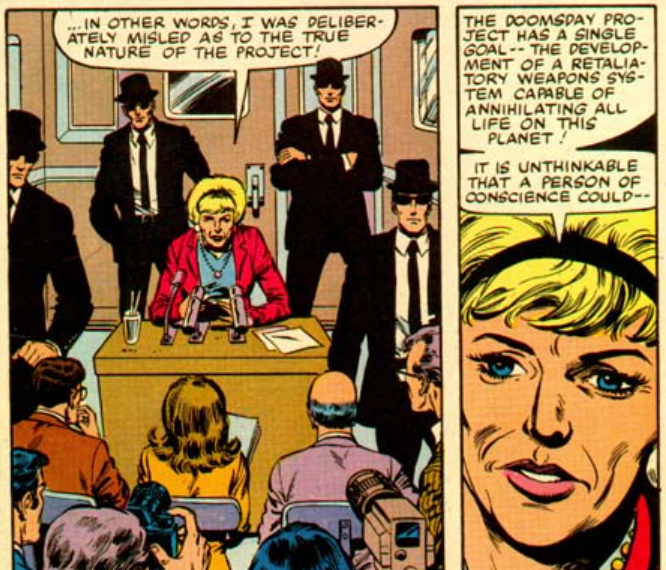
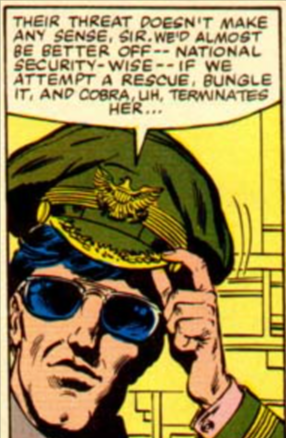
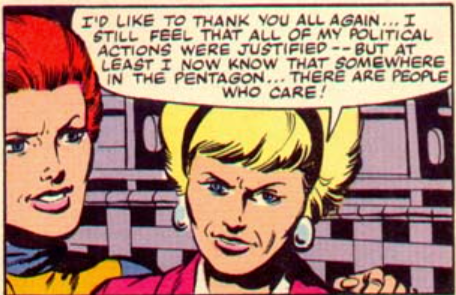
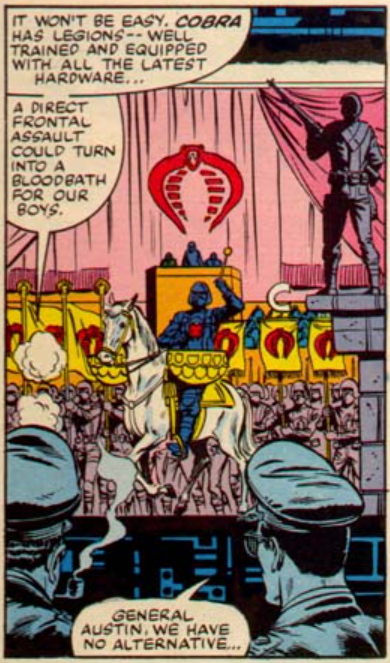
Pingback: Revisiting Marvel Comics’ GI Joe | The Staging Point
Pingback: Marvel’s GI Joe Retrospective, Issue #1b: “Hot Potato” | The Staging Point